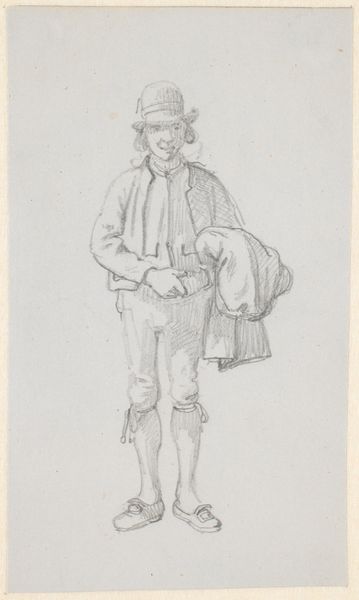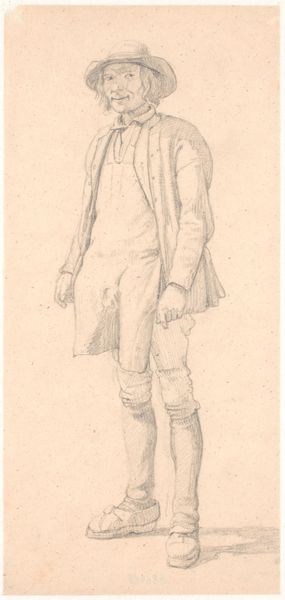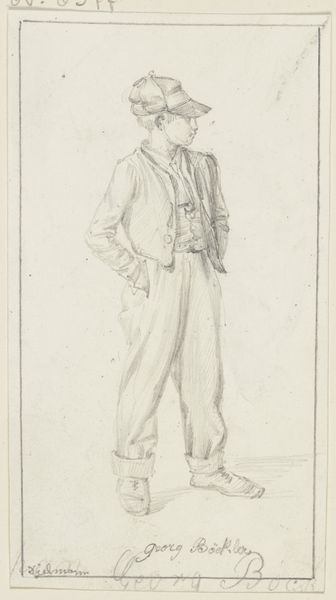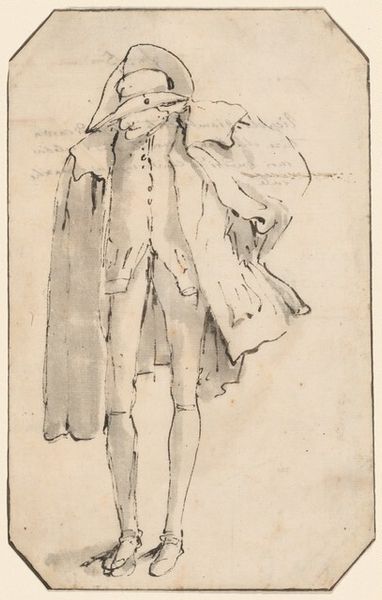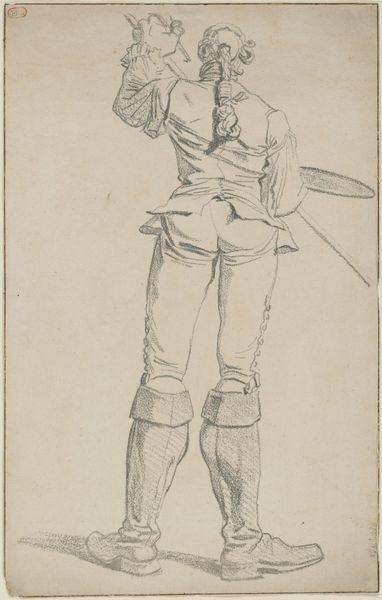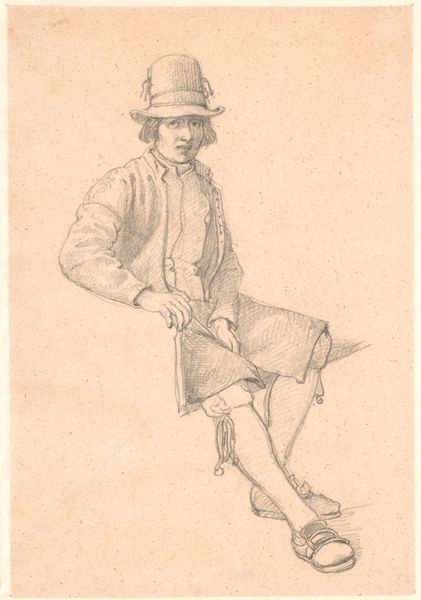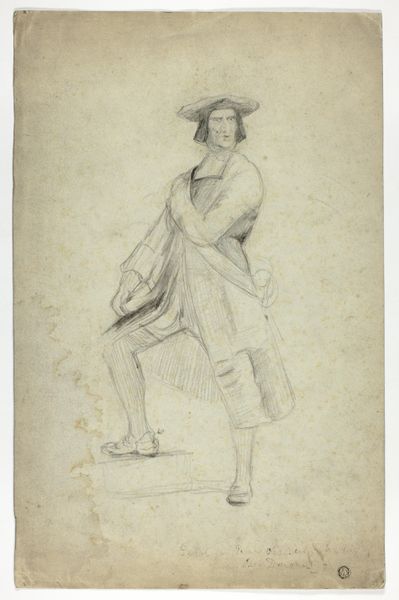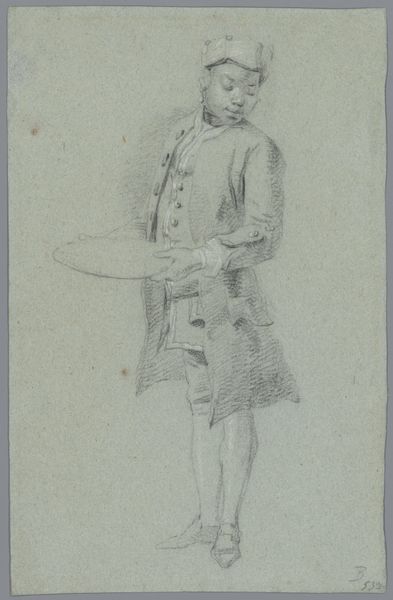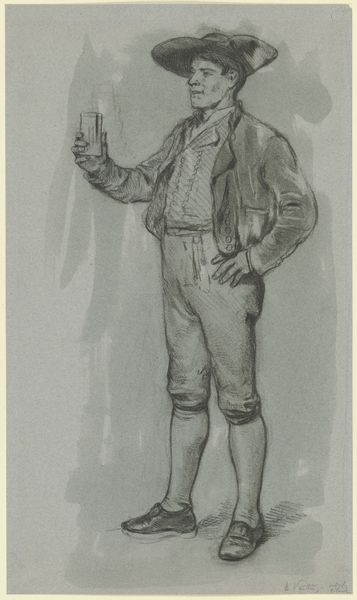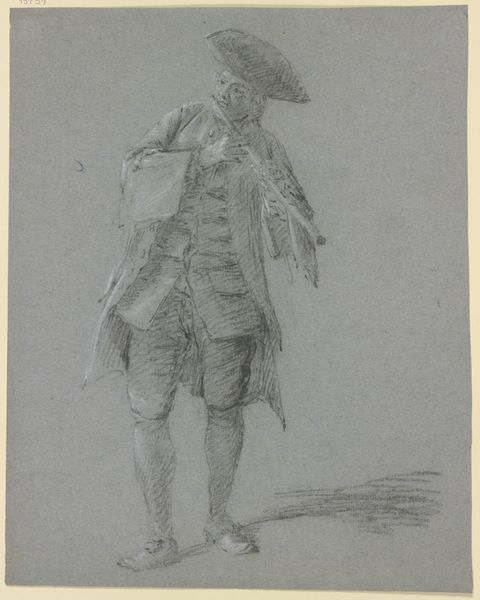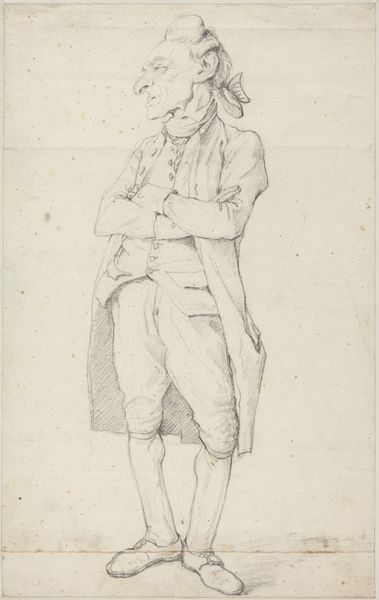
drawing, pencil
#
drawing
#
pencil
#
history-painting
#
academic-art
#
realism
Dimensions: 158 mm (height) x 100 mm (width) (bladmaal)
Curator: Let’s turn our attention to this pencil drawing by C.A. Lorentzen, titled "Stående mand med hat og stok," which translates to "Standing Man with Hat and Stick." Lorentzen was active from 1746 to 1828, and this work offers a glimpse into his realist, academic style. Editor: It strikes me immediately as rather whimsical, despite its formal qualities. The slight smirk on the man’s face and the almost jaunty angle of his hat give him a certain playful air. Curator: Absolutely. And within that playful air, it's impossible to ignore the markers of his social status and position. We see this particularly through his clothing: the coat, the cravat, and, of course, the hat itself. How might this imagery reflect social hierarchies of the time? Editor: Well, the stick for example, serves not just as a walking aid, but a symbolic representation of authority and gentility. Similar visual cues occur across many periods. It brings to mind how royalty is represented across cultures. Even the subtle details in how garments are rendered show dedication to codes that solidify a sense of social understanding. Curator: And the use of pencil drawing here, I think, also speaks to certain social expectations around artistry, suggesting accessibility of creative skill within elite circles. The realism of the drawing captures specific details of his dress, hinting at his identity and likely social circles. Considering his clothing style, it definitely reflects 18th-century fashion sensibilities, which played an essential role in societal branding. Editor: That is very insightful. To go a little further, his easy stance gives off confidence. It reminds me of poses found in Roman portraiture. So the cultural association that pose carries says so much about what sort of visual statements people understood. It transcends beyond just fashion! Curator: A useful comparison. By looking at visual tropes, we begin to see how certain imagery reinforces power and perpetuates privilege. And here, in Lorentzen’s drawing, we can clearly see an aesthetic reflection of social standing of a given man. Editor: Yes. And the enduring allure of particular codes, and their adaptability across artistic expressions and across generations, are ever revealing. I appreciate your insight as always. Curator: Likewise. By considering not only technique and symbolism, but also social contexts, we arrive at more holistic understandings.
Comments
No comments
Be the first to comment and join the conversation on the ultimate creative platform.
